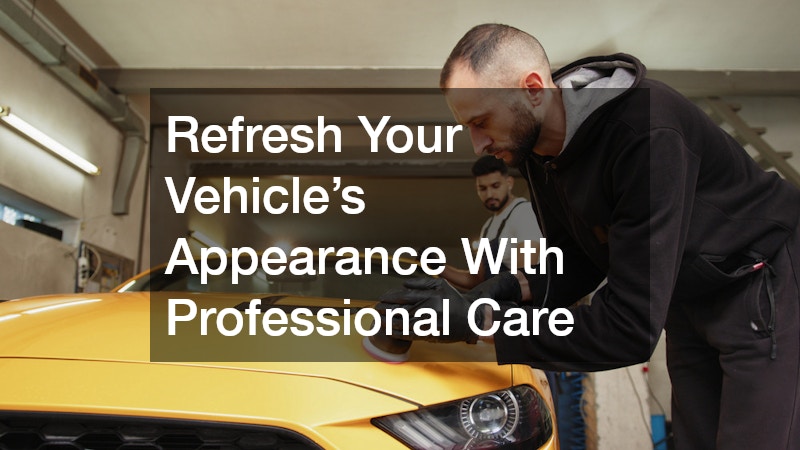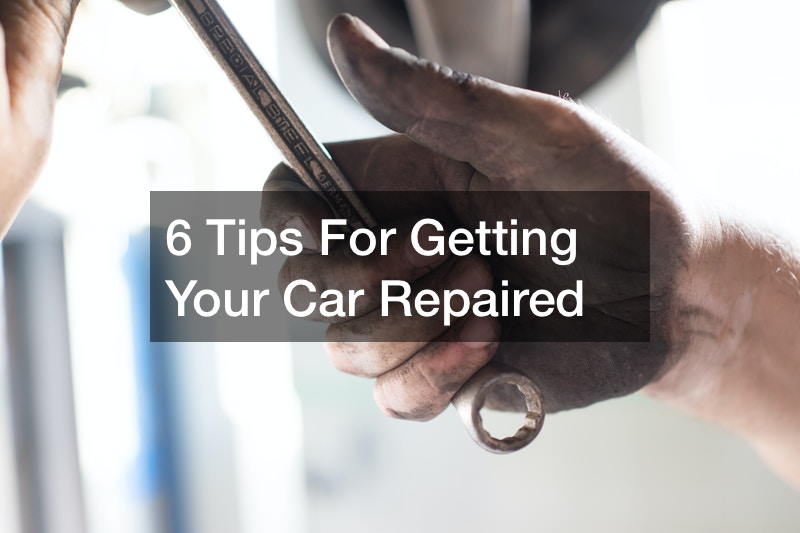
Smart Ways to Restore and Upgrade Your Daily Driver

Daily drivers go through a lot—constant commuting, stop-and-go traffic, harsh weather exposure, and the kind of everyday wear that slowly dulls both performance and appearance. Even if your vehicle hasn’t experienced major issues, age and mileage gradually reduce reliability and comfort. Many drivers assume that a car must be replaced to feel “new” again, but with the right approach, thoughtful upgrades can dramatically improve how your vehicle performs, looks, and feels each day. The key is making smart decisions, addressing underlying issues before investing in aesthetic improvements, and choosing upgrades that genuinely add long-term value.
This guide walks through practical, detailed, and cost-effective ways to restore and enhance a daily driver. From inspecting structural integrity to selecting worthwhile products, each section provides actionable insights you can use immediately. Whether your goal is comfort, safety, performance, or resale value, strategic improvements can transform an aging ride into something you enjoy driving again.
Evaluate Structural Damage Before Making Cosmetic Changes

Before investing in cosmetic or comfort upgrades, it is essential to determine whether your vehicle has underlying structural issues that could compromise performance or safety. Many drivers unknowingly focus on the wrong repairs first, only to discover later that deeper problems require urgent attention. Even a minor incident in a parking lot or low-speed impact can cause misalignment, frame concerns, or subtle body weaknesses that require professional evaluation through collision repair.
Start by performing a thorough inspection. Look for irregular panel gaps, uneven tire wear, misaligned doors, or unusual noises when driving over bumps. These may indicate hidden structural issues. If you’ve experienced even a small accident, have a professional examine the frame and suspension systems. Skilled technicians can identify damage that is impossible for an untrained eye to detect.
When prioritizing repairs, always address structural integrity before appearance. Even if cosmetic issues seem bothersome, a weakened frame or compromised suspension can worsen with time, affect handling, and lead to more expensive damage. Consider the following approach:
- Repair structural damage first to prevent worsening conditions
- Align the frame and suspension before replacing exterior panels
- Ensure the airbags, sensors, and safety systems are functioning properly
- Verify that the vehicle performs normally on the road after repairs
Once structural concerns are resolved, you can confidently move on to appearance upgrades knowing your vehicle is safe and sound beneath the surface.
Document Accidents and Repairs to Protect Long-Term Value
Keeping detailed records of accidents, repairs, and upgrades ensures clarity for future transactions and can greatly influence resale value. Even minor incidents should be properly documented so that you are prepared if questions arise later. This is especially important when navigating insurance claims or disputes where a car accident attorney can help interpret liability, coverage details, or contested outcomes.
Always begin by photographing damage—wide shots and close-ups from multiple angles. Obtain repair estimates from reputable shops and keep copies of invoices for any work completed. A well-organized record of maintenance and improvements not only helps with insurance discussions; it also demonstrates responsible ownership to prospective buyers.
When documenting vehicle history, include:
- Accident dates and locations
- Police or incident reports
- Insurance claim numbers
- Comprehensive repair receipts
- Warranty details for installed parts
Buyers often feel more confident purchasing a car with transparent records because it reduces the uncertainty surrounding its past. Proper documentation also reduces the likelihood of disputes and can help maintain the car’s value over time. Even if you have no plans to sell soon, consistent record-keeping for your daily driver pays off in the future.
Learn When To Sell Rather Than Repair Extensive Damage

Not every vehicle is a candidate for restoration, especially when repair costs far exceed its value. At some point, it may be more practical to sell than to continue investing in costly fixes. Understanding when to make this decision can save thousands of dollars. When a car reaches a certain age or requires major engine, transmission, or structural repairs, seeking options similar to local junk cars services may be the most financially sensible path.
Signs that a vehicle may be beyond cost-effective repair include:
- Severe frame damage or multiple structural failures
- Frequent mechanical breakdowns affecting basic reliability
- Rust damage that compromises safety or core components
- Repairs estimated at more than half the vehicle’s value
Before deciding, calculate ongoing repair needs versus replacement cost. Your daily driver might seem restorable, but if major issues persist, the investment isn’t worthwhile. Selling to buyers who specialize in purchasing damaged or non-running vehicles helps you recover some value while avoiding further expenses. If you’re unsure whether to repair or sell, get multiple estimates from qualified shops. A second opinion can offer clarity and prevent overspending on a vehicle nearing the end of its useful life. Making a strategic choice at the right time can free you from a financial burden and allow you to upgrade to a more reliable ride.
Understand Your Rights After a Serious Road Incident
Serious accidents can leave drivers overwhelmed, uncertain about next steps, and unsure how to manage recovery, repairs, and insurance interactions. Knowing your rights and responsibilities ensures you handle the situation properly and protect your interests. When injuries or significant damage occur, consulting professionals such as a vehicle accident attorney can help clarify the legal process and protect your financial well-being.
After a major incident, take these steps:
- Gather as much evidence as possible, including photographs and witness statements
- Contact your insurance provider quickly and provide factual information only
- Obtain a copy of the police report for your records
- Track all medical visits, vehicle repairs, and communication logs
Insurance adjusters may attempt to minimize payouts, so maintaining clear records is crucial. A legal professional can help you understand whether compensation should include medical expenses, repairs, diminished value, or lost income. Even if you believe the accident was minor, documenting everything ensures you remain protected if issues arise weeks or months later. Understanding your rights helps you make informed decisions and avoid pitfalls that could impact your long-term financial stability.
Refresh Your Vehicle’s Appearance With Professional Care

Improving the appearance of your vehicle can dramatically enhance how you feel behind the wheel. A tired interior, faded paint, or cloudy headlights can make a car feel far older than it is. One of the most effective ways to rejuvenate your vehicle is through professional auto detailing, which goes far beyond a simple wash and vacuum.
Detailing services often include:
- Deep interior cleaning and stain removal
- Carpet shampooing and upholstery treatment
- Paint correction to remove swirls and oxidation
- Headlight restoration for improved night visibility
- Engine bay cleaning to remove grease buildup
Routine detailing protects the materials inside and outside the car, extending their lifespan. It also enhances the vehicle’s overall aesthetic, making daily driving more enjoyable and leaving a better impression if you use your car for work or business.
For best results, schedule professional detailing for your daily driver at least twice a year. This prevents grime buildup, protects your investment, and keeps your vehicle looking fresh even with high mileage. Choosing a reputable service ensures that the right tools, techniques, and protective coatings are used.
Compare Upgrade Costs at Different Market Options
Prices for repairs, upgrades, and enhancements can vary widely depending on where you go. Dealerships, specialty shops, and independent garages each have strengths and limitations. Understanding these differences helps you budget wisely and ensure high-quality service. When comparing prices and service levels, the auto dealership option may sometimes offer advanced tools, certified technicians, and manufacturer-approved parts, but usually at a premium cost.
When deciding between service providers:
- Compare written estimates from at least three shops
- Evaluate warranty coverage on parts and labor
- Ask about technician certifications or brand training
- Consider turnaround times and appointment availability
Independent shops may offer more affordable pricing and personalized service, while specialty centers often excel in niche repairs such as electronics, bodywork, or performance upgrades. The key is aligning your needs with the strengths of each provider. Whether you’re installing new components, repairing damage, or upgrading features, take time to research the best value and expertise rather than assuming the first quote is the best one.
Improve Visibility and Safety With Glass Restoration

Clear visibility is essential for safe driving, yet many motorists put off repairing chips or cracks in their windshields. Even small defects can grow over time, obstruct vision, weaken structural integrity, or cause glare during nighttime driving. Addressing these issues early is significantly easier and safer. When damage is beyond repair, professional auto windshield replacements provide a clean, durable solution.
Consider replacing or repairing your windshield if:
- Cracks exceed the length permitted by state laws
- Chips obstruct the driver’s line of sight
- Damage extends to the edges of the glass
- Visibility is compromised in rain, fog, or bright sunlight
Modern windshield replacements often include advanced features such as rain sensors, heating elements, or lane-assist calibration components. Skilled technicians ensure proper installation so that airbags deploy correctly and the vehicle’s safety features function as designed. Avoid DIY repair kits for significant damage—they may temporarily mask cracks but rarely restore full clarity or structural strength. When in doubt, have a professional inspect the glass and recommend the safest option.
Choose High-Value Upgrades That Boost Daily Function
Small, practical enhancements can dramatically improve daily usability and comfort without requiring major investment. Many drivers overlook simple upgrades that make their vehicle more organized, cleaner, and more enjoyable. When selecting improvements, choose durable and high-quality auto products that offer real utility rather than short-lived accessories.
Popular functional upgrades include:
- All-weather floor liners to protect carpets
- Seat covers for improved comfort and longevity
- Trunk or cargo organizers to reduce clutter
- Sunshades to protect dashboards and electronics
- Cleaning tools that simplify weekly maintenance
Focus on items that solve everyday problems—spills, clutter, weather, or wear. Avoid items that are purely decorative or fail to deliver meaningful value. Look for products with strong user reviews and materials built to withstand real-world use. Functional upgrades may not be flashy, but they significantly enhance the driving experience and keep your daily driver in better condition over time.
Restore Your Exterior With Targeted Bodywork Techniques
Minor dents, door dings, and exterior blemishes can make your daily driver look older than it is and may negatively affect resale value. Fortunately, modern techniques allow technicians to restore panels quickly and often affordably. Paintless dent removal is especially effective for shallow dents without paint damage and preserves the original finish. For deeper dents or creases, traditional dent repair methods provide a more comprehensive solution.
Professional technicians assess damage based on:
- Dent size and depth
- Paint condition and elasticity
- Location on the vehicle
- Accessibility from behind the panel
Restoring exterior panels improves aesthetics and helps maintain long-term value. It also prevents minor damage from turning into larger problems, such as cracked paint that leads to rust. Regular exterior inspections and timely repairs prevent small imperfections from becoming costly issues later. If you frequently park in busy areas, consider using protective strategies such as parking farther away, choosing end spots, or installing side guards when appropriate.
Upgrade Convenience and Comfort With Modern Electronics
Modern technology offers an incredible range of enhancements that make daily driving more convenient, efficient, and enjoyable. Many drivers underestimate how much small electronic upgrades can improve everyday routines. Features like remote start, heated seats, better lighting, and upgraded sound systems all provide meaningful comfort. Working with professional remote start installers ensures the job is done safely and integrates smoothly with your vehicle’s electrical system.
Popular tech upgrades include:
- Remote start systems for climate control before driving
- Smart key or keyless entry enhancements
- LED headlight conversions for better visibility
- Backup cameras or dashcams for additional security
- Audio system improvements for clearer sound
When choosing tech upgrades, verify compatibility with your vehicle’s electrical architecture. Poorly installed electronics can cause battery drain, wiring issues, or malfunctioning sensors. Always choose professionals with proven experience, and ask about warranties or service guarantees. These enhancements not only make your vehicle more enjoyable but also help bring older cars closer to modern standards without needing to purchase a new model.
Restoring and upgrading a daily driver doesn’t have to be overwhelming or expensive. With a strategic approach, you can address critical structural needs, improve safety, enhance comfort, and refresh your vehicle’s appearance. Small improvements often make the greatest impact, and prioritizing quality workmanship ensures your investment pays off long-term. By choosing the right upgrades and staying proactive with maintenance, your daily vehicle can feel significantly newer, perform more reliably, and deliver a more enjoyable driving experience every day.


